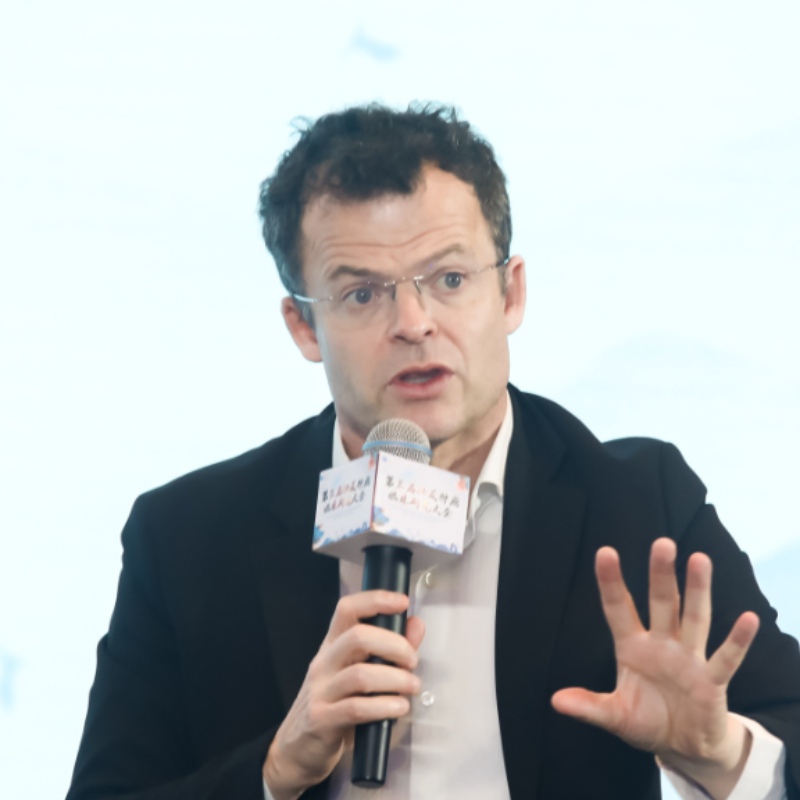查看更多
密码过期或已经不安全,请修改密码
修改密码
壹生身份认证协议书
同意
拒绝

同意
拒绝

同意
不同意并跳过





2025年4月19日,第三届泌尿肿瘤临床研究大会在北京正式召开。本次大会秉承传统,以主旨报告、中国泌尿肿瘤临床研究的现状、ADC药物的临床与探索、核素药物的腾飞、临床研究精读、细胞治疗篇、围手术期临床研究篇七个环节,聚焦泌尿肿瘤临床研究热点,集结泌尿内、外科医生和申办企业三方,对临床研究和诊疗实践的难点、困境及新方向、新思想进行了交流探讨。
伦敦玛丽女王大学巴茨癌症研究所Thomas Powles教授作为特邀嘉宾参会,并在“立足国内,面向世界”讨论环节,回答了与会学者的踊跃提问。中国医学论坛报今日肿瘤将该环节的5个问答整理成辑,为大家呈现一场中国专家和国际视野的交互碰撞。



张顺教授
南京大学医学院附属鼓楼医院
我发现一个有趣的现象,在EV-302研究中,高PD-L1表达患者的比例接近58%,但据我所知,在许多其他研究中,这一比例仅为20%或30%左右。众所周知,PD-1高表达会带来更有效的治疗效果。那么,为什么EV-302研究中PD-L1的表达比例会如此之高呢?
I found an interesting thing that in the EV-302 study the proportion of the high PD-L1 patients is nearly about 58%, but I think in many studies, the proportion is nearly 20% or 30%. As we all know, the high PD-1 expression will lead to a more effective result. So, why the PD-L1 expression in EV-302 study is so high?
Prof. Thomas Powels
伦敦玛丽女王大学巴茨癌症研究所
要讲PD-L1生物标志物的故事就不能单单只讲一个生物标志物。我参与过一些药物的研究,我认为每种药物都有自己的生物标志物。关于生物标志物的开发,是一个缺乏良好合作的典型例子。
首先是我参与的阿替利珠单抗(atezolizumab)相关试验。我们只评估了免疫细胞上的PD-L1,而没有评估肿瘤细胞上的PD-L1,使用的是SP142抗体染色。通过SP142染色,我们观察到大约50%的免疫细胞表达PD-L1。
帕博利珠单抗(pembrolizumab)已经在肺癌中取得成功,他们测量了肿瘤细胞和免疫细胞的PD-L1表达。我们在EV-302试验中重复了这个方法,大约65%的患者免疫细胞或肿瘤细胞PD-L1染色呈阳性。
最后,纳武利尤单抗(nivolumab),我并未参与这个试验。研究者只进行肿瘤细胞染色,结果显示只有25%的膀胱癌患者的肿瘤细胞表达了PD-L1。
这就解释了为什么在一些试验中PD-L1阳性率为25%,如CheckMate 274研究,而在其他试验中,如EV-302试验,由于同时测量了肿瘤细胞和免疫细胞染色,阳性率达到了65%。
我的团队就此问题撰写了一篇文章,希望不久后能发表,文章指出我们必须重新定义PD-L1:不再笼统地称为PD-L1,而应细分为PD-L1 IC(免疫细胞)、PD-L1 TC(肿瘤细胞)或PD-L1 IC/TC。只有这样,我们才能开始真正弄清楚这些生物标志物的作用,因为没有统一的标准,试验结果就截然不同。
你提出的这个问题非常重要。在我看来,我们在PD-L1生物标志物方面已经做了足够多的研究。因此,我希望我们可以暂时放下这个生物标志物。我认为在围手术期,ctDNA是一个更有趣的生物标志物,值得探索。HER2也是一个很好的生物标志物,需要更深入的探索。此外,FGFR也是一个值得谨慎对待的生物标志物,它面临着同样的问题,多种变异形式,多种检测方法,多种药物选择,但可能只有一种有效。
因此,在尿路上皮癌领域,我们在生物标志物发现方面的合作并不够好。如果我们能在这方面加强合作,我们也许能为患者提供更好的治疗选择。
I found an interesting thing that in the EV-302 study the proportion of the high PD-L one patients is nearly about 58%, but I think in many studies, the proportion is nearly 20% or 30%. As we all know, the high PD-1 expression will lead to a more effective result. So, why the PD-L1 expression in EV-302 study is so high?
The PD-L1 story, the PD-L1 biomarker story is not one biomarker. Each drug, and I was involved in the development of those. I think all three of them, maybe two or three ,each drug, develops its own biomarkers. We talked about collaboration earlier. This is a good example of poor collaboration.
The first group is atezolizumab group that I was involved with. We only measured PD-L1 on immune cells. We didn't measure PD-L1 on tumour cells. And we used the SP142 antibody. And actually, when you look at it, about 50% of immune cells express PD-L1 with SP142.
The pembrolizumab folks have already had success in lung cancer, but they had done in measuring tumor cells and immune cells. So they said we're not gonna do the same as Roche, we will do on our way, we will repeat what we did in lung cancer, that's what we did in EV-302, about 65% of patients are positive for immune cell or tumor cell staining.
And then finally, the nivolumab folks, and I wasn't involved in this group. Pursued exclusively tumor cells staining, only 25% of bladder cancers expressed PD-L1 on tumor cells.
That explained the variability in some trials being 25% positive, such as CheckMate 274 adjuvant nivolumab, and other trials such as EV+Pembro being 65% positive because they are measuring tumor cells and immune cells staining.
整理 | 中国医学论坛报社 黄琳琳
查看更多